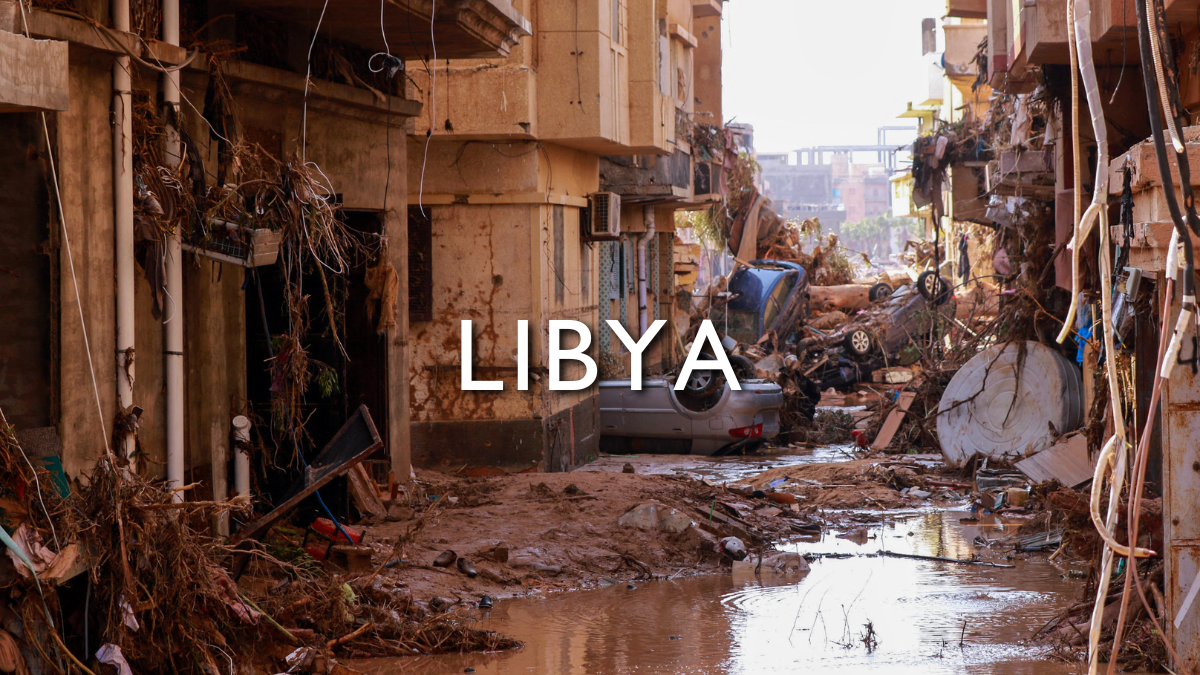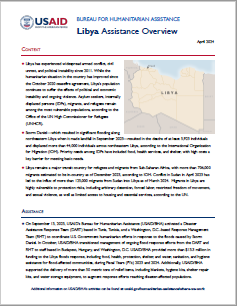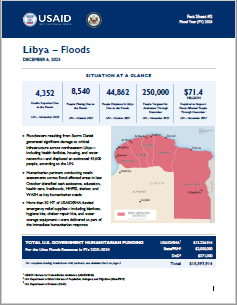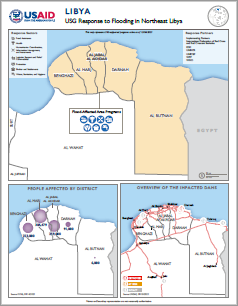
Libya has experienced widespread armed conflict, civil unrest, and political instability since 2011, resulting in increased humanitarian needs across the country. Libya also remains a major transit country for refugees and migrants from Sub-Saharan Africa. While the humanitarian situation has improved since the October 2020 ceasefire agreement, the UN reports that asylum-seekers, internally displaced persons, migrants, refugees, and other conflict-affected individuals remain among the most vulnerable populations and face limited access to basic services and high exposure to protection risks. Conflict in Sudan since April 2023 also led to the influx of at least 20,000 registered asylum-seekers and refugees from Sudan—bringing the total number of registered asylum-seekers and refugees from Sudan to more than 40,000—and likely many more unregistered individuals as of June 2024, according to the Office of the UN High Commissioner for Refugees (UNHCR). Additionally, floods resulting from Storm Daniel in September 2023 led to the deaths of at least 5,923 people, the displacement of more than 44,000 others, significant infrastructure damage, and widespread humanitarian needs across northeastern Libya, according to the International Organization for Migration (IOM).
USAID and its implementing partners are providing multi-sector assistance including food, health care, nutrition, protection, psychosocial, shelter, and water, sanitation, and hygiene support to Libya’s most vulnerable populations, including flood-affected individuals and refugees from Sudan, in Fiscal Year 2024. In addition, USAID’s early recovery, risk reduction, and resilience activities support long-term efforts to address humanitarian needs, minimize chronic vulnerabilities, and strengthen community resilience to natural disasters across Libya.



